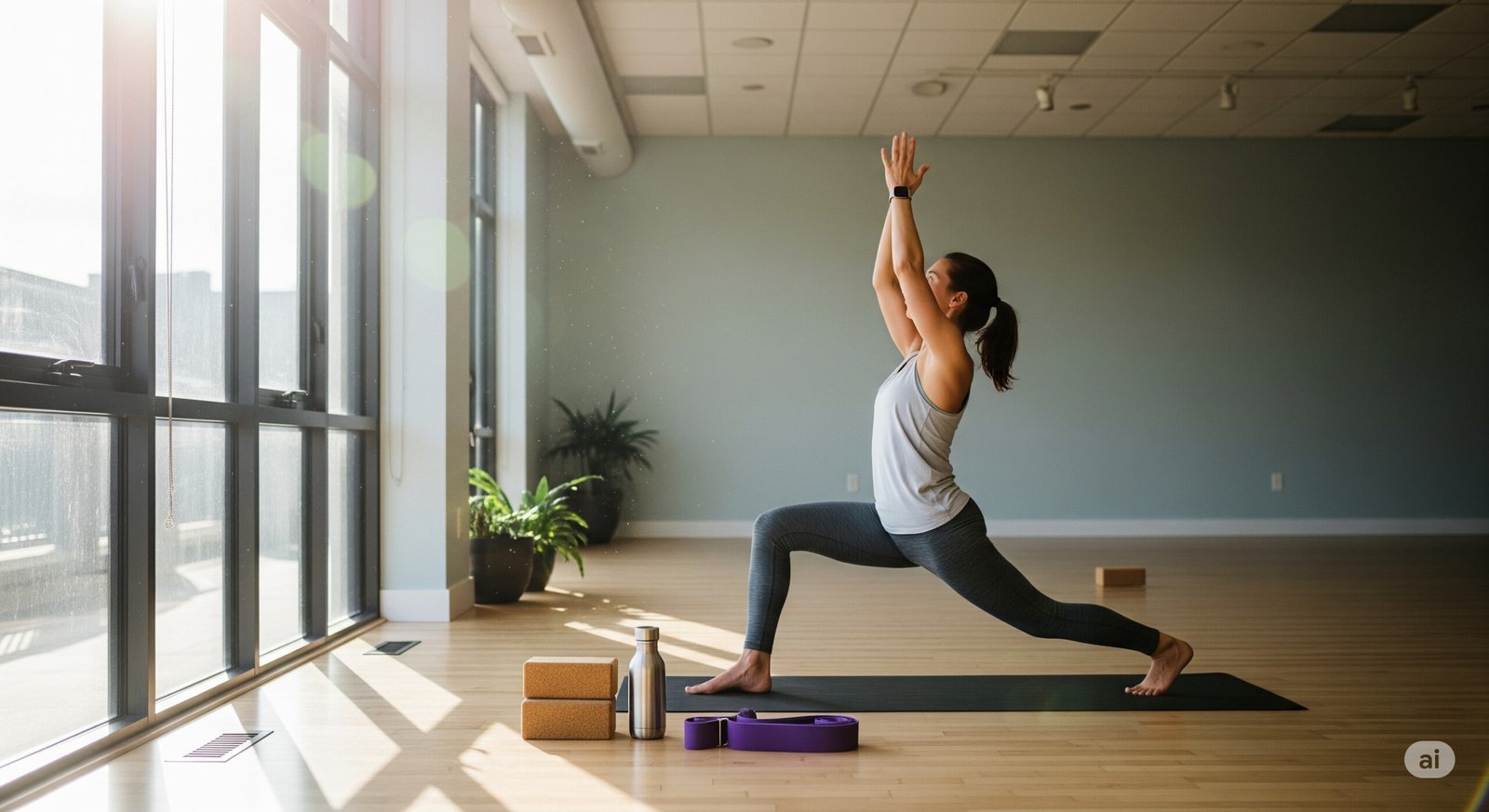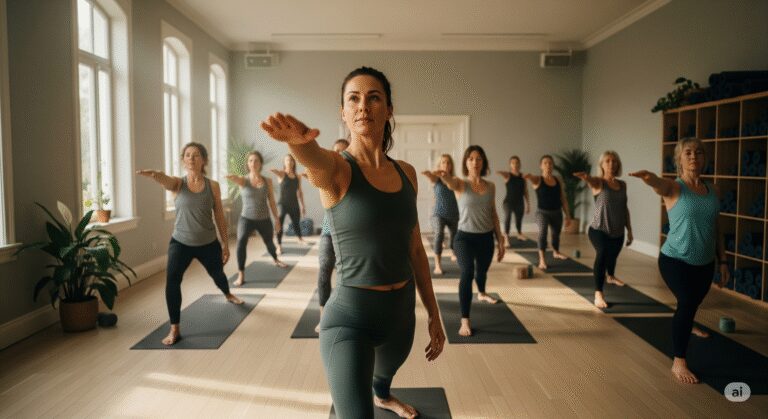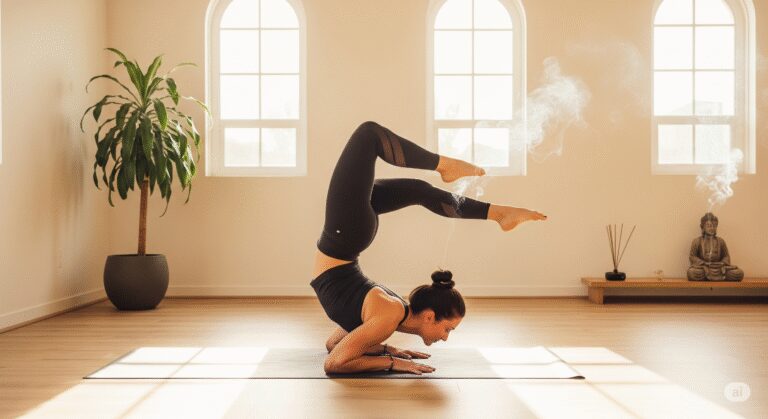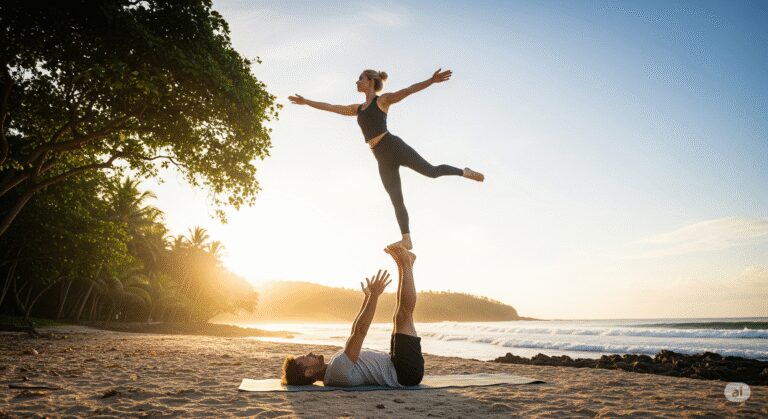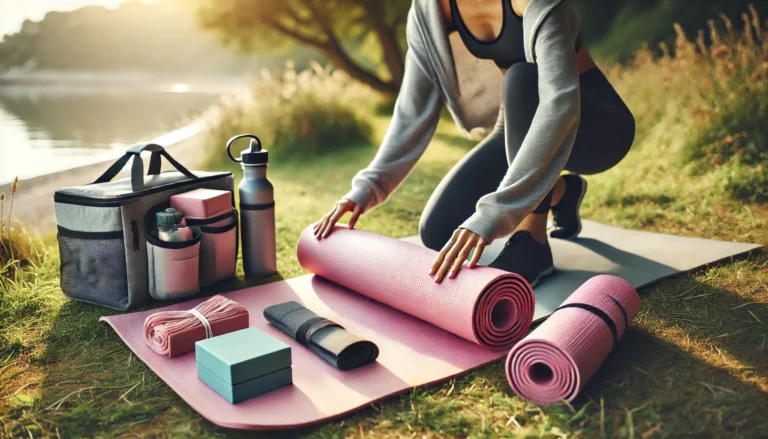Power Yoga for Beginners: 10 Energizing Poses to Build Strength
It started with a simple promise to myself: move more, feel stronger, and boost my energy without spending hours in the gym. I had tried traditional yoga before and loved the calm it brought me, but I wanted something more—something that got my heart pumping while still giving me the flexibility and focus yoga offers.
Thank you for reading this post, don't forget to subscribe!That’s when I stumbled into my first power yoga class. It was in a small studio on a sunny Saturday morning. The instructor’s playlist was upbeat, the pace was dynamic, and within minutes, I felt sweat dripping down my back. But it wasn’t just a workout—it was a whole-body experience. By the end, I felt stronger, lighter, and surprisingly accomplished.
If you’ve ever wanted a form of yoga that combines strength building with the calorie-burning benefits of a workout, power yoga for beginners is the perfect place to start. It’s a fusion of traditional yoga postures with faster, more energetic transitions that engage your muscles, challenge your endurance, and leave you feeling empowered.
In this guide, I’ll walk you through 10 energizing poses that form the foundation of beginner-friendly power yoga. No need to be super flexible or have years of yoga experience—just bring an open mind, a bit of determination, and a willingness to sweat.


Why Power Yoga is Perfect for Beginners
While the name might sound intimidating, fitness yoga in the form of power yoga is incredibly beginner-friendly if you start with the right poses and pacing. Think of it as the bridge between traditional yoga and a cardio workout.
Here’s why power yoga works for beginners:
- It builds strength fast – Dynamic flows work your core, arms, legs, and back.
- It improves stamina – Faster sequences increase your heart rate like a cardio workout.
- It boosts flexibility – The poses still stretch your muscles even at a quicker pace.
- It relieves stress – Mindful breathing remains a big part of the practice.
Tip: I started with just 15 minutes a day. Over time, my balance, energy, and confidence grew without me feeling overwhelmed.
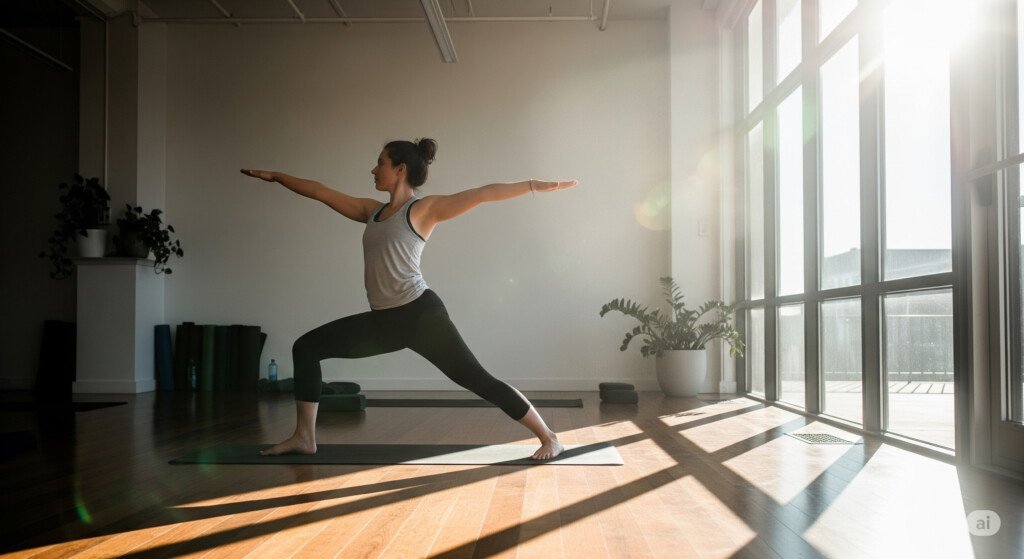

How to Prepare for Your First Power Yoga Session
Before we jump into the dynamic yoga poses, let’s set you up for success.
- Choose the right space
Whether at home or in a studio, make sure you have enough room to stretch your arms and legs fully. - Wear breathable, fitted clothing
Power yoga involves plenty of movement, so choose outfits that won’t get in your way. - Stay hydrated
Keep a water bottle nearby and sip between sequences, not during poses. - Use a grippy yoga mat
With faster transitions, a slip-resistant mat keeps you stable.
Tip: I swear by my PROlite Yoga Mat it’s supportive and never slips.
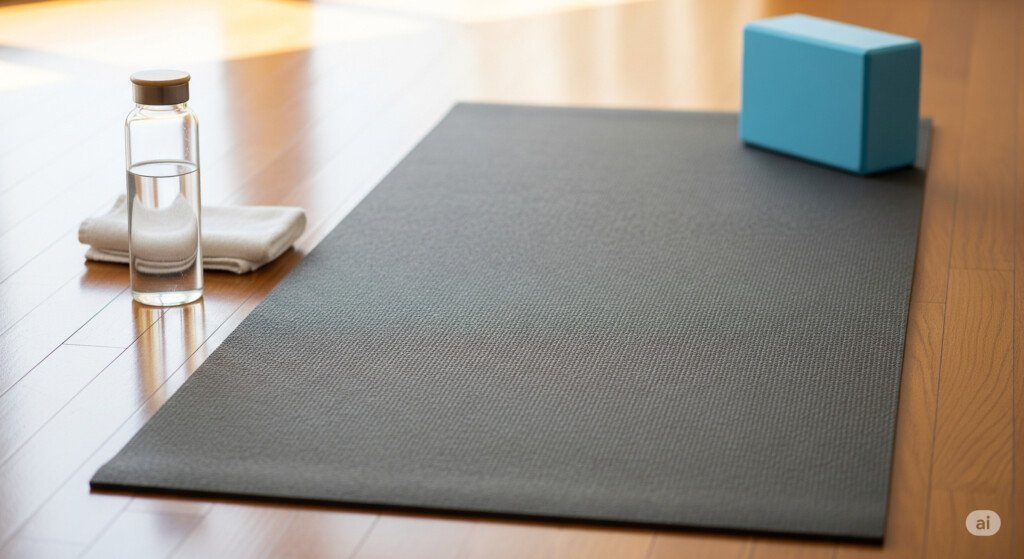

10 Energizing Power Yoga Poses for Beginners
These poses form the backbone of strength building in beginner power yoga. Move through them at a steady pace, linking breath with movement.
1. Mountain Pose (Tadasana)
The foundation for every strong flow.
Why it works: Improves posture, engages your core, and sets the tone for the session.
How to do it:
- Stand tall with feet hip-width apart.
- Press evenly into all four corners of your feet.
- Engage your thighs and lift your chest.
- Roll shoulders back and down, keeping chin parallel to the floor.
Duration: Hold for 3–5 breaths, feeling your body activate from toes to head.
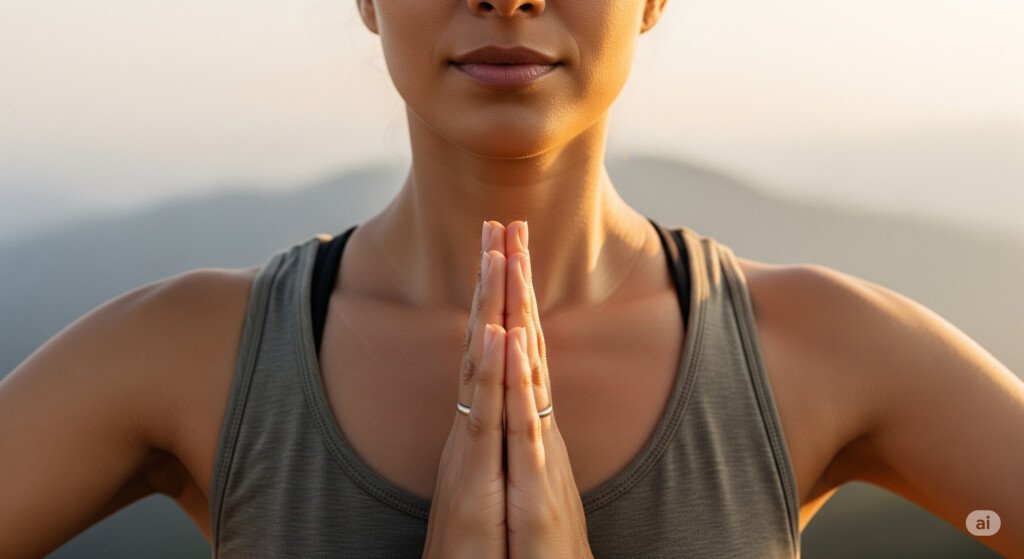

2. Plank Pose (Phalakasana)
A full-body strength builder.
Why it works: Targets core, arms, and shoulders while improving endurance.
How to do it:
- Start on all fours, then extend your legs back.
- Keep your body in a straight line from head to heels.
- Engage your abs and press through your palms.
Tip: For wrist comfort, try using yoga wedges to reduce pressure.
Duration: Hold for 20–30 seconds, working up to 1 minute.
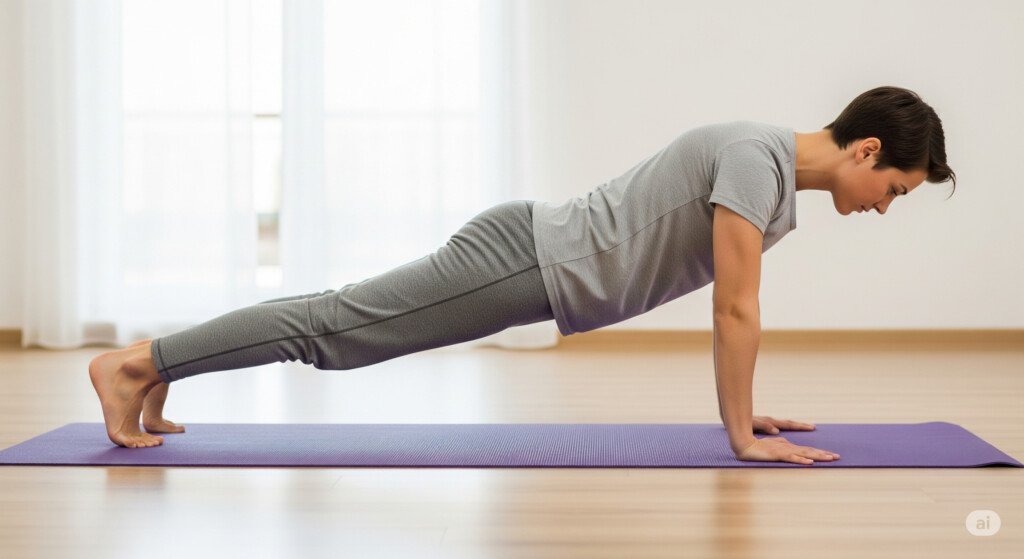

3. Downward Facing Dog (Adho Mukha Svanasana)
A power yoga essential for strength and flexibility.
Why it works: Strengthens arms and legs while stretching hamstrings and spine.
How to do it:
- From Plank Pose, lift your hips up and back.
- Press heels toward the floor (knees can be slightly bent).
- Spread fingers wide and press through your palms.
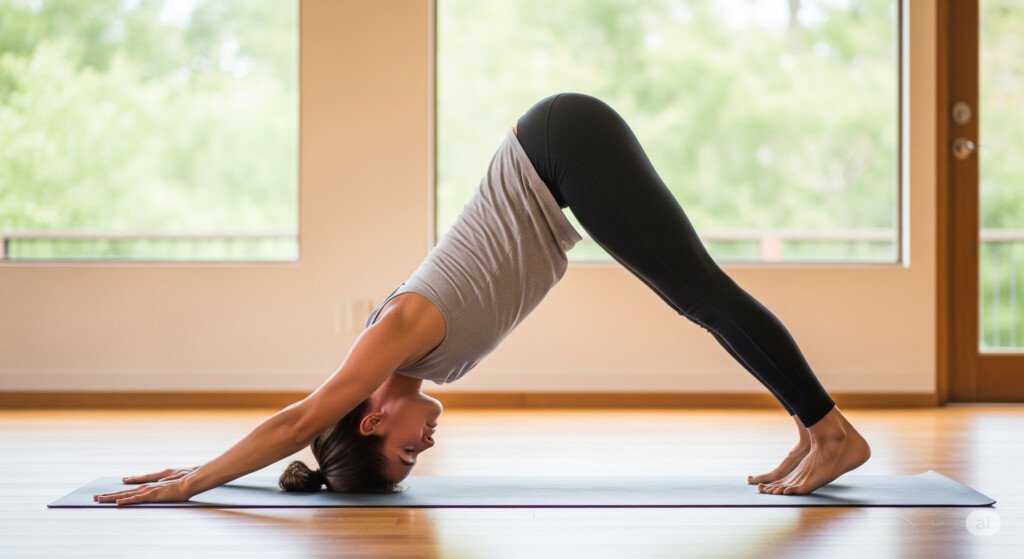

4. Chair Pose (Utkatasana)
A leg and core burner that builds endurance fast.
Why it works: This pose fires up your thighs, glutes, and abs, mimicking the effort of a squat while improving posture.
How to do it:
- From Mountain Pose, bend your knees as if sitting in an invisible chair.
- Keep weight in your heels and chest lifted.
- Extend arms overhead with palms facing in.
Duration: Hold for 5–8 breaths, then release back to Mountain Pose.


5. Warrior I (Virabhadrasana I)
A grounding pose that builds lower body and core strength.
Why it works: Engages legs, hips, and shoulders while improving focus and balance.
How to do it:
- Step your right foot forward into a lunge, left foot angled slightly out.
- Bend your right knee over the ankle.
- Lift arms overhead, palms facing each other.
Tip: If your hips feel tight, a yoga block under the back heel can help stabilize your stance.
Duration: Hold for 3–5 breaths per side.
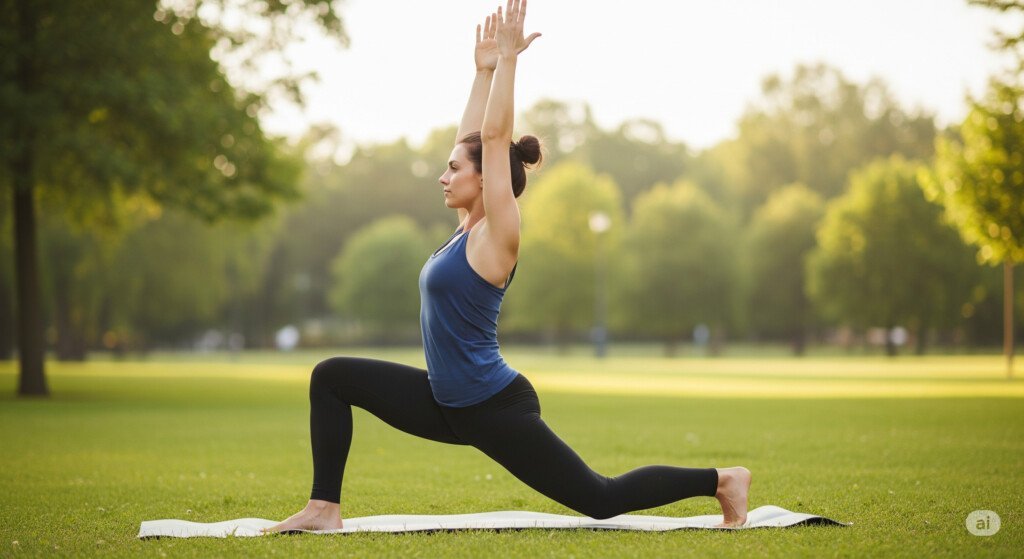

6. Warrior II (Virabhadrasana II)
A strength and stability powerhouse.
Why it works: Builds endurance in the legs and arms while opening the hips.
How to do it:
- From Warrior I, open your hips and arms so they’re parallel to the floor.
- Keep gaze over your front hand.
- Engage your core and keep shoulders relaxed.
Duration: Hold for 5 breaths on each side.
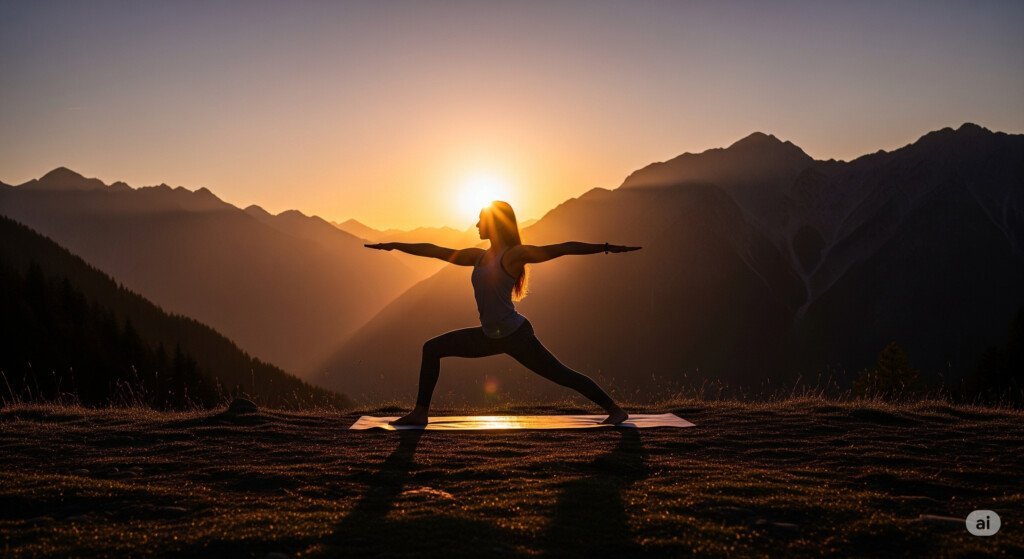

7. Chaturanga Dandasana (Low Plank)
A key dynamic yoga move that boosts upper body strength.
Why it works: Strengthens arms, chest, shoulders, and core—similar to a push-up but with a yoga flow twist.
How to do it:
- From Plank Pose, shift forward on your toes.
- Bend elbows to a 90-degree angle, keeping them close to your ribs.
- Keep body in one straight line.
Duration: Hold for 2–3 breaths, then move into Upward Facing Dog.
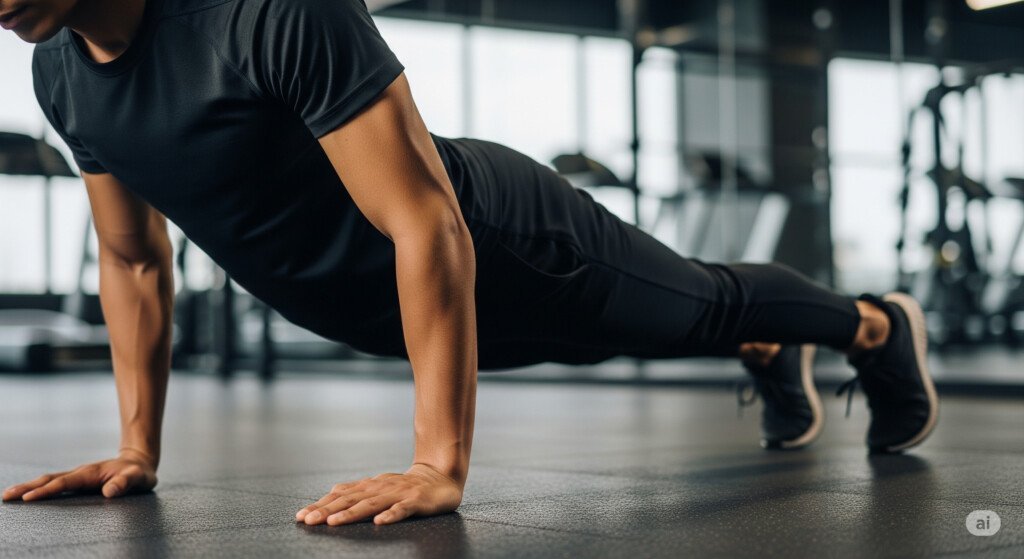

8. Upward Facing Dog (Urdhva Mukha Svanasana)
A heart-opening pose that counterbalances strength work.
Why it works: Strengthens arms and back while opening the chest and improving posture.
How to do it:
- From Chaturanga, press palms into the mat and straighten arms.
- Lift thighs off the floor, keeping only hands and tops of feet grounded.
- Roll shoulders back, gaze forward or slightly up.


9. Crescent Lunge (Anjaneyasana)
A balance challenge that strengthens legs and improves flexibility.
Why it works: Builds strength in quads, hamstrings, and glutes while stretching the hip flexors.
How to do it:
- From Downward Dog, step your right foot forward.
- Bend your right knee at 90 degrees, keep left leg extended back.
- Lift arms overhead, palms facing each other.
Duration: Hold for 5–8 breaths, then switch sides.
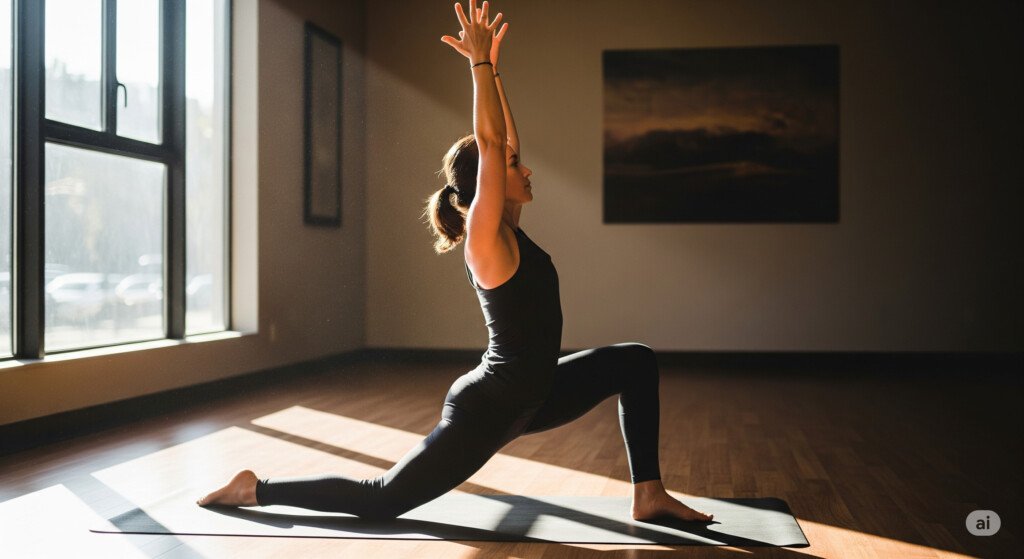

10. Boat Pose (Navasana)
The ultimate strength building core finisher.
Why it works: Engages abs, hip flexors, and back muscles for total core strength.
How to do it:
- Sit on the floor, knees bent, feet flat.
- Lean back slightly, lift feet off the floor, shins parallel to the ground.
- Extend arms forward, keeping chest lifted.
Tip: Use a yoga strap around your feet if you need extra support for balance.
Duration: Hold for 20–30 seconds, repeat 2–3 times.
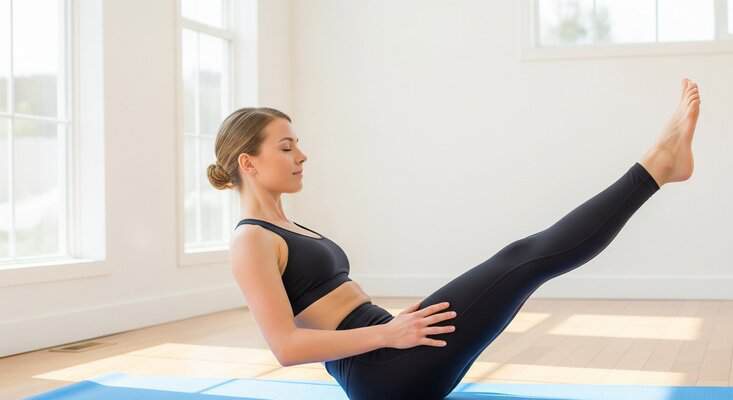

Tips for Building Your Power Yoga Routine
- Start with 10–15 minutes if you’re new, then increase to 30 minutes.
- Link breath with movement for maximum energy.
- Combine strength poses (Plank, Chair, Warriors) with stretching poses (Downward Dog, Crescent Lunge).
- End with Savasana to allow your body to cool down and absorb the benefits.
When to Practice Power Yoga
- Morning: Boosts energy for the day ahead.
- Midday: Perfect for a lunch break workout.
- Evening: Helps release stress while still being energizing.
💡 If you’re using power yoga as cardio yoga, 3–4 times a week is ideal for building strength and stamina.


Conclusion: Your Stronger Self Starts Here
When I first began my power yoga for beginners journey, I thought it was just going to be another workout. But with each session, I realized it was so much more—it made me feel capable, focused, and ready to tackle my day.
Power yoga isn’t about perfection. It’s about progress. Whether you’re here to get stronger, build endurance, or find a workout that makes you actually look forward to moving, these 10 poses can be your foundation.
So roll out your mat, put on your favorite playlist, and give yourself the gift of 20 minutes. Your body—and mind—will thank you. Need to know more about best yoga poses!
FAQ
1. Is power yoga good for weight loss?
Yes, power yoga burns calories while building muscle, making it great for weight management.
2. How often should beginners do power yoga?
Start with 2–3 times a week, increasing frequency as your stamina improves.
3. Do I need equipment for power yoga?
A good yoga mat is essential. Props like blocks and straps can help but aren’t mandatory.
4. Is power yoga the same as cardio yoga?
They overlap—power yoga can be considered a form of cardio yoga because of its fast pace.
5. Can beginners handle the intensity of power yoga?
Absolutely—just start slow, focus on form, and build up gradually.
Disclaimer:
This post may contain affiliate links. If you purchase through them, we may earn a small commission at no extra cost to you. Also, this content is for informational purposes only and does not substitute professional medical advice.

